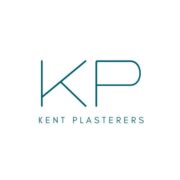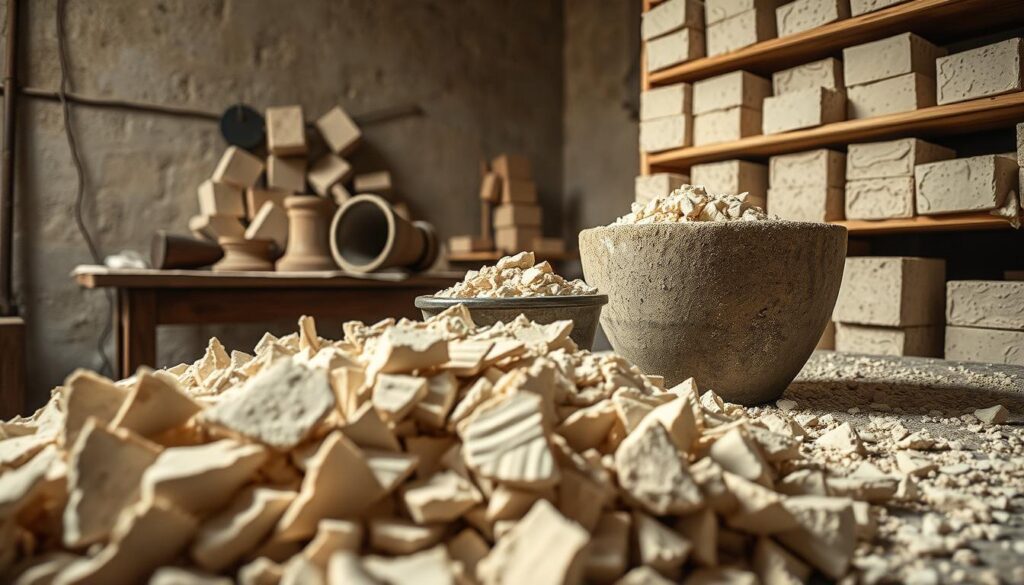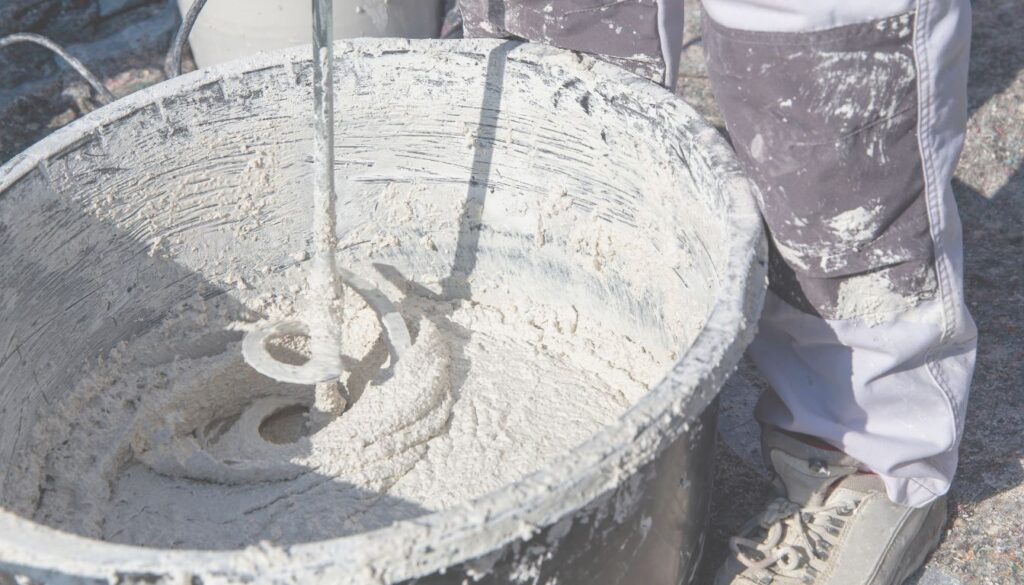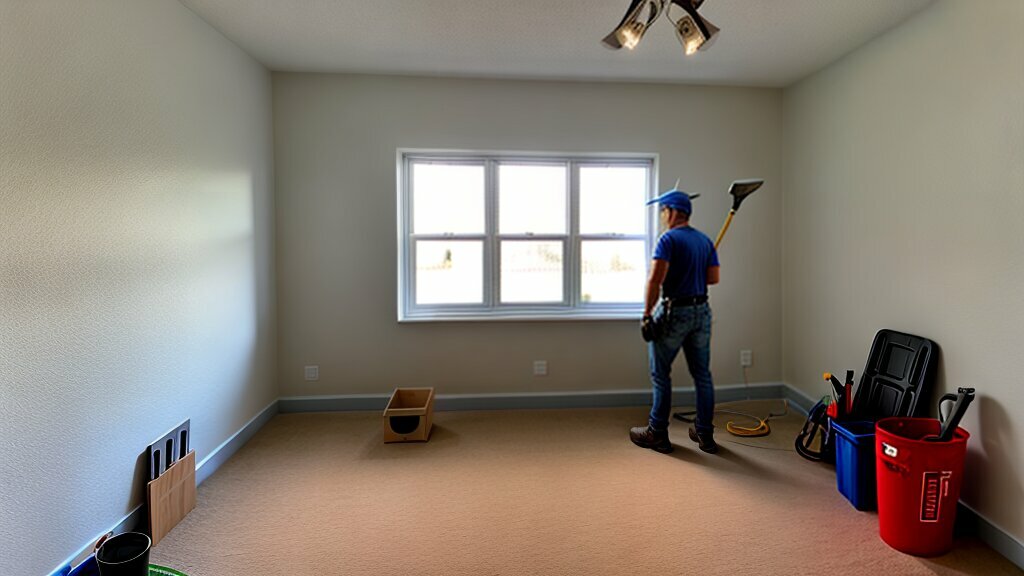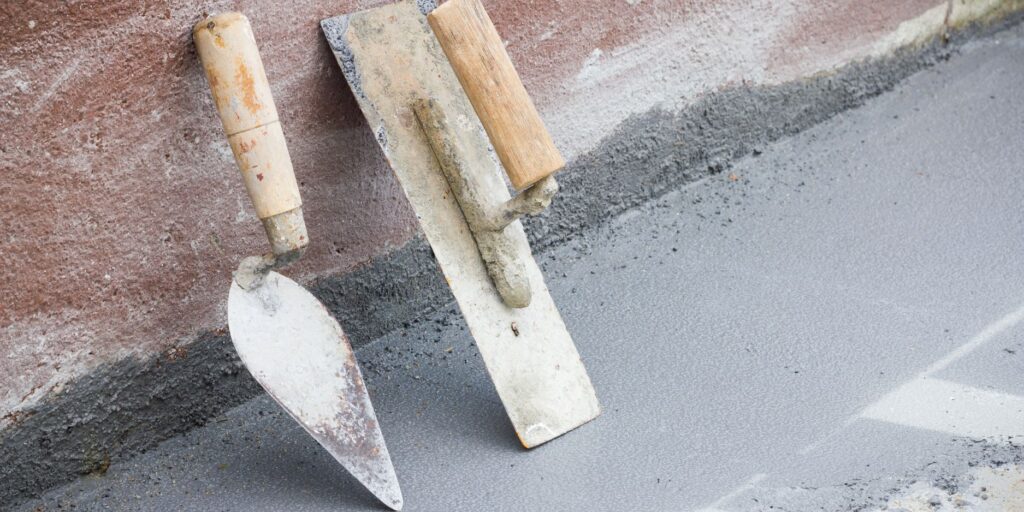Recycling Plaster
Imagine renovating your home and being left with piles of plasterboard waste. What do you do with it? Many might think of tossing it into a skip, but that’s no longer an option. Since 2009, the Environmental Agency has mandated that gypsum-based materials, including plasterboard, must not be sent to landfill1. This legislation applies to both individuals and businesses, ensuring responsible waste management. At Kent Plasterers, we understand the importance of sustainable practices. Proper disposal of plasterboard not only avoids fines but also supports environmental goals. Did you know that mixing plasterboard with general waste can create toxic hydrogen sulfide gas1? This highlights the need for separation and recovery processes. Our guide delves into the significance of recycling plasterboard and its role in reducing landfill waste. Whether you’re a homeowner or a business, understanding your responsibilities under current environmental legislation is crucial. We’re here to help you navigate these requirements and answer any questions you may have. Key Takeaways Plasterboard must not be sent to landfill, as per Environmental Agency regulations1. Mixing plasterboard with general waste can produce toxic gases1. Both domestic and commercial sectors must adhere to proper disposal practices. Recycled gypsum can be used in composting and new plasterboard production1. Kent Plasterers offers expert advice on sustainable plasterboard disposal. Introduction to Recycling Plaster Understanding the process of recycling plasterboard is vital for sustainable construction practices. This material, when handled correctly, can significantly reduce waste and support environmental goals. By reusing plasterboard, businesses can also cut down on overall costs while minimising harmful emissions2. One of the key steps in the recycling process involves separating plasterboard from other waste. This prevents the creation of toxic gases, such as hydrogen sulphide, which can harm both health and the environment2. Proper disposal methods ensure that the material remains dry and free from contaminants, making it easier to recycle2. Another critical aspect is maintaining the correct water and powder ratios during recycling. This ensures the material retains its quality and can be repurposed effectively. For instance, recycled gypsum can be used in new building products without losing its structural integrity3. Recycling plasterboard also alleviates pressure on landfill sites. With plasterboard banned from landfills, it’s essential to adopt sustainable disposal methods4. Local recycling centres often have designated areas for plasterboard waste, though fees may apply in some cases2. Benefit Impact Reduced Waste Less pressure on landfill sites Cost Savings Lower disposal and material costs Environmental Protection Minimised pollution and emissions For further guidance on sustainable plasterboard disposal, feel free to contact us at Kent Plasterers. We’re here to help you navigate the process and ensure compliance with all regulations. Legislation & Guidelines on Plaster Disposal Navigating the legal landscape of plaster disposal is essential for both households and businesses. Since 2009, the Environmental Agency has enforced strict regulations to prevent gypsum-based materials from ending up in landfill sites5. This legislation ensures that even small amounts of gypsum must be separated from biodegradable waste6. Environmental Agency Requirements The agency mandates that non-hazardous gypsum-based materials must be disposed of in designated landfill cells, free from biodegradable waste6. Businesses must adhere to these guidelines to avoid fines and ensure compliance with national standards5. Larger construction projects are also required to have a Site Waste Management Plan, detailing protocols for plasterboard disposal6. Domestic and Business Responsibilities Both households and companies share the duty of proper waste management. For businesses, staff must be trained to follow national guidelines, ensuring plasterboard is segregated from other waste streams5. Local recycling centres often accept plasterboard, though fees may apply6. Keeping plaster waste dry and uncontaminated is crucial for effective recycling6. Improper disposal can harm air quality by releasing toxic gases like hydrogen sulphide5. Working with certified recycling centres ensures legal compliance and supports environmental sustainability6. For further guidance, contact Kent Plasterers. We’re here to help you navigate these regulations and meet your legal obligations. How to recycle plaster: A Step-by-Step Guide Properly managing plaster waste is a crucial step in sustainable construction. At Kent Plasterers, we guide you through the procedure to ensure compliance and efficiency. This process not only supports environmental goals but also helps businesses reduce costs and waste7. Preparing Plaster for Recycling The first step involves separating plaster from other waste materials. This prevents contamination and ensures the design quality of the recycled product. Correct moulding techniques are essential during this phase8. Measurements of water and powder must be precise. For example, a 1:1 mixing ratio ensures optimal consistency and strength7. Testing a sample helps verify the quality before proceeding9. Explaining the Recycling Process Once prepared, the plaster is crushed and dried at 180°C for two hours8. This removes moisture and prepares the material for reuse. The recycled plaster can then be mixed with water to form new products7. Recycling plaster reduces landfill pressure and supports sustainable construction practices. It also saves time and resources for businesses by reusing materials effectively9. Step Description Separation Remove plaster from other waste to prevent contamination. Measurement Use precise water and powder ratios for optimal quality. Drying Bake at 180°C for two hours to remove moisture. Reuse Mix recycled plaster with water for new applications. For further support or questions, contact Kent Plasterers. We’re here to help you navigate the recycling process and ensure compliance with all regulations. Recycling Plasterboard on Construction Sites Construction sites often generate significant plasterboard waste, which requires careful management. Off-cuts and damaged stock are common sources of this waste, but with proper strategies, it can be minimised effectively10. Proper handling of plasterboard not only reduces waste but also lowers overall costs. For instance, hiring a dedicated skip for plasterboard disposal can cost around £250, but it ensures compliance with regulations11. Training staff in correct storage and handling techniques can further reduce damage during transport10. Managing Off-Cuts and Damaged Stock Off-cuts and damaged stock are inevitable on construction sites, but they can be managed efficiently. Separating plasterboard from other waste streams is crucial to prevent contamination and ensure it can be recycled10. Partnering with manufacturers through take-back
